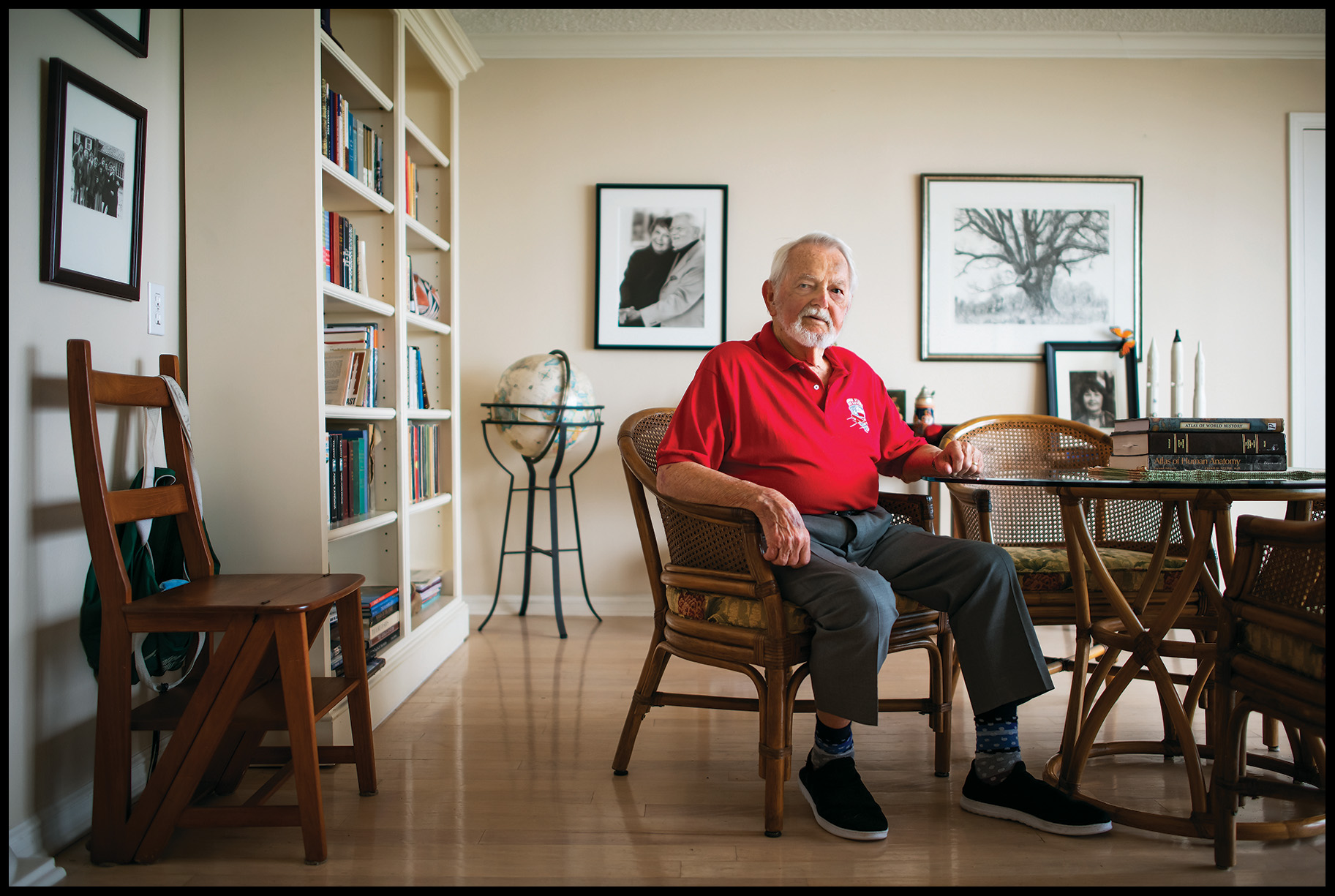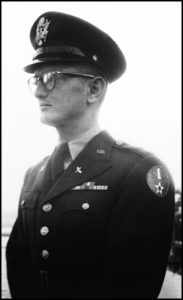
Al Sondern
Seabee on Island of
Samar, Philippines.
Al Sondern
Yeoman First Class, U.S. Navy
1944-1946

(YN) 1/c Al Sondern,
White Plains, NY, 1946
We weren’t citizens. You had to have papers and it was a long process. Once the war came, they stamped “Enemy Alien” on our papers. People don’t realize that anybody who wasn’t a citizen at that time, especially the enemy’s citizen, was suspect.
I was born in Bocholt, Germany in 1925. My father was a Mahler (artist) and did gold leaf and painted ceilings in churches. He was from Northern Germany and he walked 800 miles to Berchtesgaden to work in a little chapel there. He got drafted into the Bavarian infantry in WWI. In 1926 he came to New York and we followed in 1927. He worked in a lot of big homes. The FBI raided him all the time; I can understand today why they did. We weren’t citizens. You had to have papers and it was a long process. Once the war came, they stamped “Enemy Alien” on our papers. People don’t realize that anybody who wasn’t a citizen at that time, especially the enemy’s citizen, was suspect.
In March, 1944 I quit high school and joined the Navy as an enemy alien. After boot camp, I went to yeoman’s school and amphibious training. I was always reassigned to take the training over again. I did it three times and finally I asked what was going on. They reassigned me to the First Marine Division, which had just come back from Guadalcanal. We were assigned to prison guard duty, and I was a typist in the prison with the lawyers. That’s how I got interested in law. They called me in one day, and the chief of police and I got on the train to the Richmond courthouse and they swore me in as a citizen. Then they shipped me out to the Pacific.
They put me in the Seabees. We built an airstrip and a hospital and had a PT (Patrol, Torpedo) base on the island of Samar in the Philippines. I was a yeoman in an office and drove a jeep. That’s why I feel guilty when people tell me what a great hero I was. I was just damned lucky. There were still a few Japanese in the jungle and they paid the Filipinos $20 a head. One day a guy came into the village carrying a pole with Japanese heads on it. That was about as close as I got to seeing anything.
I came back on a ship called the Marine Cardinal and volunteered to be in the executive officers’ office. We took the northern circle near the Aleutians to get back quickly, and the only uniforms we had were shorts and t-shirts. The chaplain made the captain issue field jackets because of the cold. I was discharged in June, 1946 as yeoman first class. I enjoyed pretty much everything I did in the Navy.
I went to Champlain College for two years, finished my undergraduate degree at Denver University and stayed and got a law degree. I loved Denver and I loved my skiing. I skied until I was 86. After I graduated, I worked for Dun & Bradstreet and the Better Business Bureau. In 1956 I got a job with the Glenn L. Martin Company which later became Lockheed Martin. I was the first person they hired. I rented office space to get them started, and helped them find houses. After six months I went to work on the contract to build the Titan Missile. Then I was project manager of ground support equipment in Cape Canaveral. I ended up at corporate headquarters as deputy director of the Gemini Launch Program. Later I was deputy director of the engineering phase of the shuttle program.
Then I became a vice president of Hallmark Cards for 18 years and started their outsourcing overseas. I went back to work at 65 for 10 years as president of the international division of a medical software company. We were going to buy a ski lodge after I retired, but my wife couldn’t take the altitude. We ended up in Corpus Christi. Lucille and I were married for 65 years and had six kids. {02-18-2020 • Corpus Christi, TX}